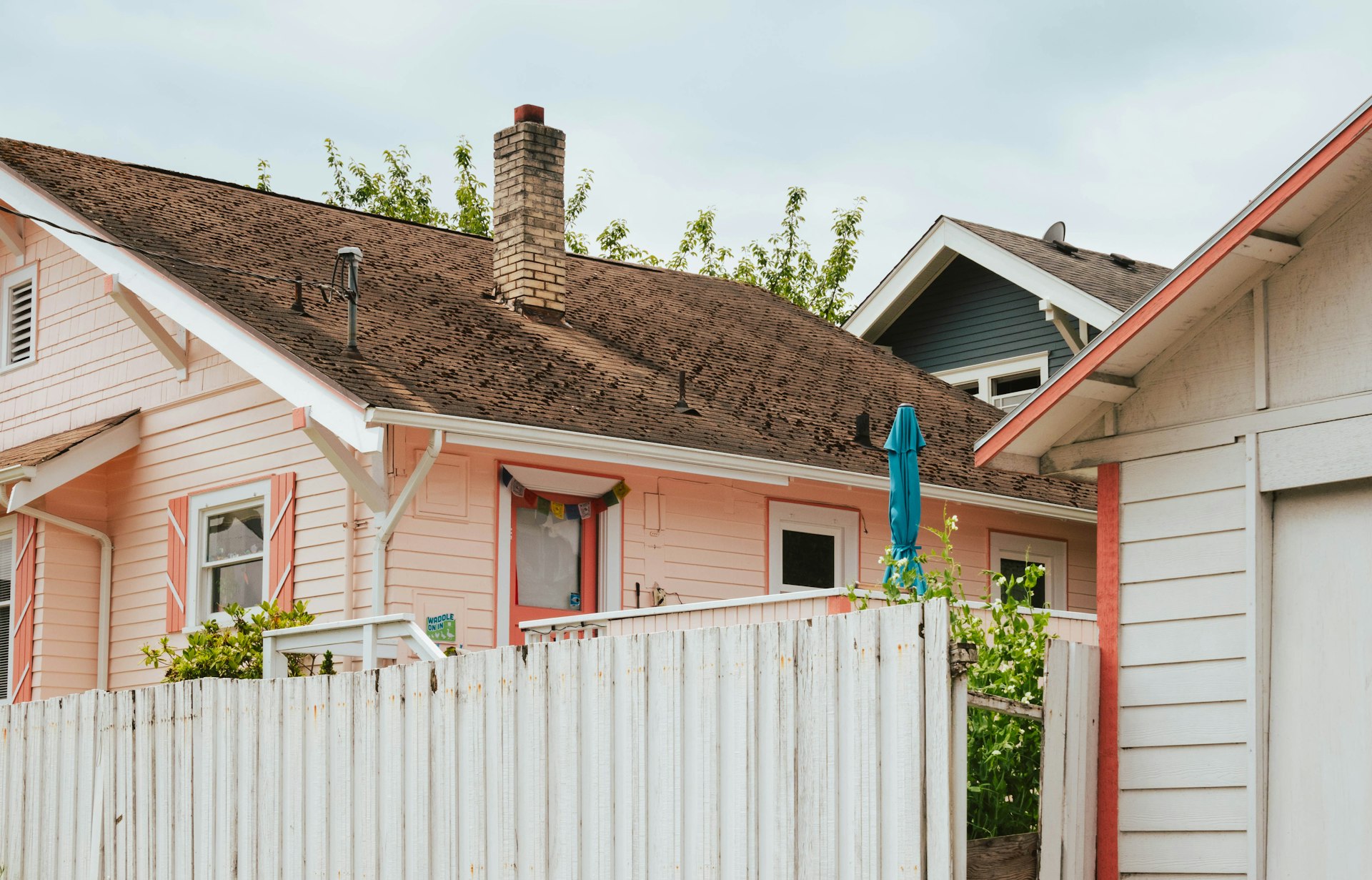Home Insurance Coverage: What You Need to Know About Roof and Plumbing Protection


Photo by Zane Lindsay on Unsplash
Understanding Home Insurance Coverage for Roof and Plumbing Issues
Homeowners insurance plays a critical role in safeguarding your property against unexpected events. Two of the most common concerns among homeowners are whether their insurance policy covers roof damage and plumbing problems . This guide offers a detailed overview of what is typically covered, what exclusions may apply, and how you can maximize your protection through proper maintenance and smart insurance choices.
Does Home Insurance Cover Roof Damage?
Most standard homeowners insurance policies offer
dwelling coverage
, which includes protection for your home’s roof. Coverage is generally limited to damage caused by specific, sudden events or
perils
clearly listed in your policy. Common covered perils include:
- Windstorms
- Hail
- Fire
- Falling objects (such as tree limbs)
- Lightning
For example, if your roof is damaged by hail or a tree falls on it during a storm, your policy will likely cover the cost of repairs, subject to your deductible and policy limits. However, if your roof leaks due to old age, lack of maintenance, or normal wear and tear, most insurance companies will deny the claim because such issues are considered homeowner responsibilities. [1] [3] [4]
Case Study: Storm Damage vs. Maintenance Issues
Consider two scenarios:
- Storm Damage: A severe windstorm tears shingles from your roof and causes leaks. Insurance adjusters determine the event was sudden and accidental, so your claim is approved, and repairs are covered (minus deductible).
- Maintenance Issue: Your 20-year-old roof has slow leaks due to worn-out shingles. The insurer determines the damage results from age and lack of maintenance, so your claim is denied. [2]
How to File a Roof Damage Claim
Follow these steps to maximize your chances of a successful claim:
- Document the damage: Take clear photos and make notes of the incident date and circumstances.
- Contact your insurer: Reach out to your insurance agent or claims department as soon as possible.
- Schedule an inspection: An adjuster will inspect the damage and determine claim eligibility.
- Review your policy: Ensure you understand your deductible and coverage limits.
- Complete repairs: Work with licensed contractors and keep all receipts for reimbursement.
If you need help finding a reputable roofing contractor, consider searching online directories or asking your insurer for recommendations.
Replacement Cost vs. Actual Cash Value
Coverage may vary depending on whether your policy pays based on replacement cost or actual cash value :
- Replacement cost: Pays the full cost to replace your roof (minus deductible).
- Actual cash value: Pays the depreciated value of your roof, accounting for age and condition. [5]
Review your policy details or contact your insurer to confirm which type of coverage applies.
Does Home Insurance Cover Plumbing Issues?
Coverage for plumbing problems depends on the cause of the damage. Homeowners insurance typically covers sudden and accidental water damage resulting from events like burst pipes or accidental discharge of water from plumbing systems. However, the policy generally does not cover damage from unresolved maintenance issues, slow leaks, or sewer backups .
Events that may be covered:
- Burst pipes due to freezing (provided proper precautions were taken)
- Accidental discharge of water from appliances (e.g., water heater rupture)
- Overflow from bathtubs or sinks
Events that are typically not covered:
- Gradual leaks from old pipes
- Damage due to lack of maintenance
- Sewer or drain backups (unless special coverage is purchased)
- Flooding from natural disasters (requires separate flood insurance)
Real-World Example: Burst Pipe vs. Slow Leak
If a pipe suddenly bursts due to freezing and floods your basement, your insurance may cover repairs to both the structure and your belongings. However, if water damage occurs over several months due to a slow leak that was never fixed, the claim is likely to be denied because insurers consider this a maintenance issue.

Photo by Gabriel on Unsplash
Steps to File a Plumbing Claim
- Stop the source: Take immediate action to minimize damage (shut off water supply).
- Document everything: Photograph affected areas and damaged property.
- Contact your insurance provider: Notify your insurer right away for guidance on next steps.
- Arrange for repairs: Hire licensed plumbers and keep invoices for your claim.
- Consult your policy: Check for exclusions and deductible details.
For sewer backup or sump pump overflow, you may need to add a specific endorsement or rider to your policy. Contact your insurer to discuss these options.
Exclusions and Limitations: What Is Not Covered?
Most policies have clear exclusions for:
- Wear and tear
- Aging or poorly maintained roofs and plumbing
- Flood damage (requires separate flood insurance)
- Sewer backups (unless specifically endorsed)
To avoid denied claims, regularly inspect and maintain your roof and plumbing systems. Consider scheduling annual professional inspections and address minor issues promptly.
How to Maximize Your Home Insurance Coverage
To ensure adequate protection, follow these proactive steps:
- Review your policy: Understand what perils are covered, deductible amounts, and exclusions.
- Schedule regular maintenance: Keep your roof and plumbing in good condition to avoid claims being denied for neglect.
- Document upgrades: If you replace your roof or update plumbing, inform your insurer to keep coverage accurate.
- Consider additional endorsements: For sewer backup or flood coverage, inquire about optional riders.
- Request an annual policy review: Ask your insurance agent to walk you through your coverage and recommend improvements.
If you are unsure which repairs or upgrades may affect your coverage, contact your insurer’s customer service for guidance. Most major insurance companies provide detailed resources and support through their official websites and phone numbers.
Alternative Pathways to Assistance
If your claim is denied or your policy doesn’t cover a necessary repair, consider these alternatives:
- Seek local government resources for emergency housing repairs by contacting your city’s housing department or searching “emergency home repair assistance” with your state or local agency name.
- Research nonprofit organizations that offer grants or loans for critical home repairs.
- Inquire with your mortgage lender about special programs for urgent repairs.
Always verify the legitimacy of any organization before sharing personal information.
Key Takeaways
Homeowners insurance is designed to help cover the costs of unexpected, sudden damage to your roof or plumbing system, as long as the cause is a covered peril outlined in your policy. Routine maintenance, prompt repairs, and clear documentation are essential to minimize the risk of denied claims. If you have questions, contact your insurer directly or consult their official customer support channels for specific guidance. For additional coverage, explore policy endorsements for sewer backup or flood protection.
References
- [1] Allstate (2023). Does homeowners insurance cover roof damage?
- [2] Bill Ragan Roofing (2023). What Kind of Roof Damage is Covered by Home Insurance?
- [3] Progressive (2023). Does homeowners insurance cover roof damage?
- [4] Liberty Mutual (2023). Roofs & Home Insurance.
- [5] Bankrate (2024). Does Home Insurance Cover Roof Replacement?






